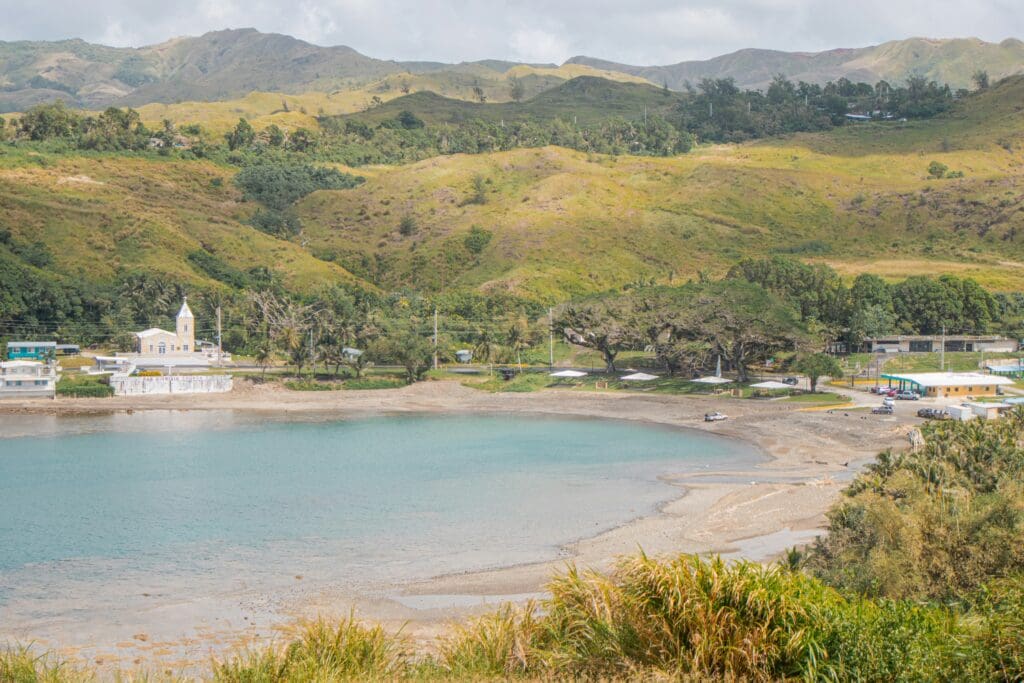
When you ask someone from Guam where they’re from, they won’t just name a city or neighborhood. They’ll tell you their village. And it’s almost always with real pride and often a story.
Because on Guam, villages aren’t just lines on a map. They’re part of who we are.
Our Villages Carry Identity, Tradition, and Pride
Each village has its own rhythm and personality. Inalåhan, where I’m from, feels peaceful and rooted in history. The ocean is always nearby, neighbors still take the time to wave, and you can feel the presence of those who came before us in the buildings and the land.
Other villages carry their own stories. Agat and Santa Rita feel close to the sea and the military history that shaped them. Yigo is full of large family compounds and weekend cookouts. Every village has something unique to offer, not just in what you can see but in what you feel when you’re there.
It’s in the way fiestas are celebrated, in the pride people feel when talking about their manåmko’, in the food, the music, and the sense of belonging that gets passed down through generations.
Villages Are About Who You Belong To
On Guam, your village isn’t just your mailing address. It’s your church community, the mayor who knows your grandparents, the kids you grew up playing with after school. It’s the road your uncle helped pave, the family name on a street sign, the neighbors who look out for you.
Even if you move away for a while, your village stays with you. It’s something you carry — in the way you speak, the way you cook, the way you show up for others.
And for anyone moving here from off-island, finding the right village is often the beginning of really feeling at home.
A Snapshot of Every Village on Guam
Each of Guam’s 19 villages has its own personality, stories, and sense of pride. Here’s a glimpse into what makes each one special:
Agana Heights
A peaceful hilltop village just above Hagåtña, known for its quiet neighborhoods and military housing. Families enjoy beautiful views of the capital and quick access to downtown.
Asan-Maina
Rich in WWII history, Asan-Maina stretches from the coastline up into lush hills. It’s home to the Asan Bay Overlook and beautiful hiking trails, blending history with nature.
Barrigada
A central village with deep family roots and longtime residents. You’ll find wide-open yards, village fiestas, and one of the island’s most recognizable churches, San Vicente.
Chalan Pago-Ordot
Tucked between hills and rivers, this village is mostly residential with a mix of old and new homes. It feels both close to everything and quietly tucked away.
Dededo
Guam’s most populated village and a vibrant blend of cultures. Known for its flea market, sports fields, and energy, Dededo is always moving and always full of life.
Hagåtña
Guam’s capital is small but full of historical significance. From the Plaza de España to Chamorro Village, it’s where politics, culture, and heritage meet.
Humåtak
One of the island’s southern gems, Humåtak is a quiet coastal village with a deep connection to Guam’s ancient history. Home to Fort Nuestra Señora de la Soledad and rich ocean views.
Inalåhan
A historic southern village known for its Spanish-style homes, coastal roads, and strong sense of community. (And yes, my hometown! I’m proud of that.)
Malesso’
Guam’s southernmost village and full of natural beauty. Think clear blue water, island-style living, and elders who pass down stories with so much love.
Mangilao
A lively village home to the University of Guam and Guam Community College. With schools, local eateries, and college-town vibes, Mangilao blends learning with everyday life.
Mongmong-Toto-Maite
A central village made up of three neighborhoods. Known for its mix of homes, apartment living, and accessibility to almost everything on the island.
Piti
A small coastal village known for its port, beautiful marine preserves, and the glass-bottom boat dock. A mix of working harbor and protected waters makes it unique.
Santa Rita-Sumai
Steeped in military history and tucked into the hills, Santa Rita is quiet and green. It carries the legacy of Sumai, a village displaced during WWII but never forgotten.
Sinajana
One of the island’s smallest villages, nestled just above Hagåtña. Sinajana is tight-knit and full of tradition, with a strong sense of pride and community.
Talo’fo’fo
Known as “God’s Country,” Talo’fo’fo is a peaceful southern village with beaches, rivers, and legends. Locals love its quiet pace and strong village pride.
Tamuning/Tumon
Guam’s shopping and hotel district. Tamuning is busy and modern, while Tumon is where tourism thrives.
Yigo
A large northern village with farmland and Andersen Air Force Base nearby. Yigo is proud, spacious, and deeply rooted.
Yona
A hillside village with sweeping views and strong family ties. Yona feels tucked between mountains and sea, with winding roads and close-knit neighborhoods.
For Anyone New to Guam
If you’re visiting or planning to move here, learning about the villages will give you a better understanding of Guam than any travel guide or real estate website ever could.
Spend a little time exploring the island. Drive through a village, stop by the neighborhood store or talk to someone who grew up nearby. You’ll start to see how each village carries its own heartbeat.
It’s more than geography. It’s history, family, and community all in one place.
There’s No Place Like Guam was created to celebrate the beauty of this island and the deep connections we share to it. Villages matter here.
And whether you’re coming home or arriving for the first time, I hope you find a place that feels like yours.